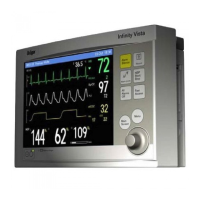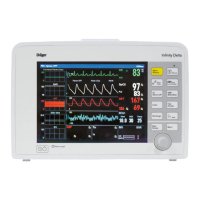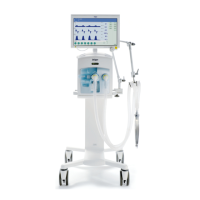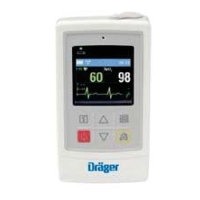ALARM P RIORITIES
VF8 DELTA/DELTA XL/KAPPA 5-3
Networked Alarms
The monitor can broadcast networked alarm messages to any compatible monitor or
central station within the network (typically in less than two seconds). However, a
central station will not annunciate or display any alarms for a connected bedside
monitor whose parameter alarms are turned off. In the Infinity network, you can also
group monitors into separate alarm groups to limit the number of messages posted at a
given device (see page 3-14).
Monitors connected to the network automatically relay alarms to the central station. If
the central station cannot acknowledge an alarm within 10 seconds (because of a
network interruption, for instance), the monitor displays the message, Network Alarm
Error
, and sounds a tone at maximum volume (100 %). The alarm volume remains set
at 100% until you change it on the Alarm Limits menu (see page 5-6).
Alarm Priorities
The monitor has three alarm priorities: high, medium and low. Previously, Dräger has
referred to these as life-threatening (L-T), serious (SER), and advisory (ADV) alarm
conditions. You can define alarm priorities for arrhythmia and ST parameters only,
using the arrhythmia setup table (see page 9-6) or the ST alarms table (see page 10-
10). Each alarm priority has its own distinctive auditory alarm signal (alarm tone) and
color.
NOTE: The network distinguishes between unwanted network interruptions (offline
errors) and the deliberate undocking of a Delta/Delta XL bedside device during Pick and
Go transport operations. Removing a monitor from its IDS or Docking Station does not
trigger a network error alarm.
Alarm Priority Examples Alarm Color
High Asystole, ventricular fibrillation Red
Medium Neonatal apnea, patient safety conditions during
NBP measurements
Yellow
Low Technical conditions such as misapplied
transducer or disconnected lead
White
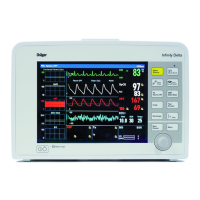
